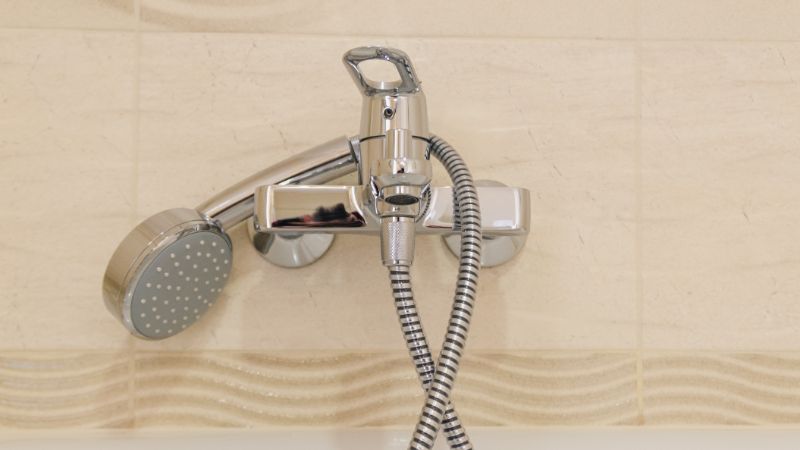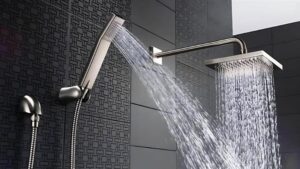A shower hose that’s too short, constantly kinks, or provides weak water pressure. The connector size, internal diameter (or bore), and length all play a vital role in how your shower performs. This guide will enlighten you to choose the right hose for a doubly refreshing shower.
Quick Select Guide
|
Select By
|
Option
|
Features
|
Best For
|
|
Connector Size
|
G1/2
|
Universal fit
|
The vast majority of family showers and faucets.
|
|
G3/4
|
Higher water flow
|
High-pressure systems or power showers.
|
|
|
Non-Standard
|
Fits specific models
|
Older or unique brand shower fixtures.
|
|
|
Hose Length
|
1.2m
|
Compact, tidy
|
Small, enclosed bathrooms or fixed showerheads.
|
|
1.5m
|
Highly versatile, good balance
|
The safest choice for most standard household needs.
|
|
|
1.8m+
|
Maximum flexibility and reach
|
Large bathrooms, walk-in showers, or bathing pets/kids.
|
|
|
Material
|
Stainless Steel
|
Heat & pressure-resistant, very durable, long lifespan (3-5 years)
|
Frequent use, hard water areas, and long-term reliability.
|
|
PVC (Plastic)
|
Lightweight, highly flexible, affordable
|
Budget-friendly choices or temporary setups.
|
|
|
Function
|
Anti-Tangle
|
Resists tangling and kinking
|
Households with kids, pets, or anyone who moves the showerhead often.
|
|
Burst-Resistant
|
Extra safe for high pressure
|
Homes with high water pressure systems.
|
|
|
360° Swivel
|
Rotates to prevent twists
|
Enhancing flexibility and preventing tangles during use.
|
Step 1: Get the Right Connection
Before you even think about length, the most critical “size” to get right is the connector. This ensures the hose will actually fit your shower unit and showerhead.
G1/2 (1/2″ BSP): The Universal Standard
This is the most common and universal connector size for the vast majority of family showers and faucets in the UK and Europe. If you’re buying a new hose, it’s highly likely you’ll need a G1/2 connector. All Mira shower hoses, for example, use this standard size.
G3/4 (3/4″ BSP): For High-Flow Showers
Less common in household setups, the G3/4 connector allows for a higher water flow. You might find this on certain high-pressure or power shower systems.
Non-Standard Sizes
Some older plumbing or specific designer brands might use non-standard fittings.
Step 2: Choose the Right Shower Hose Length
Shower hoses come in several standard lengths to suit different bathroom layouts. Choosing the right one prevents tangles and ensures you can move freely.
1.25m (125cm)
A compact length ideal for smaller bathrooms or enclosed shower cubicles where the showerhead is fixed and you don’t need much extra reach.
1.5m (150cm): The Most Popular Choice
This is the most versatile and common length, suitable for most household needs. It provides enough flexibility for showering over a bath without being so long that it gets in the way.
1.75m – 2.0m (175cm – 200cm): Maximum Flexibility
Longer hoses are perfect for large bathrooms, walk-in showers, or if you need extra reach for tasks like bathing pets or children. A 72-inch (approximately 1.8m) hose is often cited as providing the ideal amount of extra reach for most people.
Step 3: Select the Right Material of Shower Hose
The material of your hose affects its lifespan, flexibility, and look.
Stainless Steel Braided Hose
- Pros: Highly durable, resistant to heat and high pressure, and has a longer lifespan (3-5 years). The classic chrome finish is stylish and matches most bathroom fixtures.
- Cons: Can be slightly pricier and less flexible than PVC.
- Best For: High-use family bathrooms, areas with hard water, and anyone looking for a long-term, durable solution.
PVC (Plastic) Hose
- Pros: Lightweight, flexible, affordable, and easy to clean. Modern PVC hoses often come with a smooth, chrome-effect finish that mimics the look of metal.
- Cons: Prone to cracking and kinking over time and not as resistant to high heat. They typically need replacing every 1-2 years.
- Best For: Budget-conscious buyers, temporary setups, or bathrooms where a lightweight hose is preferred.
For long-term reliability, a quality stainless steel hose is the best investment. If you’re on a tight budget, PVC is a great option, but be prepared to replace it more frequently.
Step 4: Consider Special Features for an Upgraded Experience
Modern shower hoses offer advanced features designed to solve common frustrations:
- Anti-Tangle / Anti-Kink: These hoses often have a 360° swivel connector or an internal spring-like structure that allows them to rotate freely, preventing annoying tangles and kinks. This is a must-have for anyone who uses a handheld showerhead frequently, especially for bathing children or pets.
- Burst-Resistant: If you have a high-pressure water system, look for a burst-resistant hose. They are built with reinforced layers to provide extra safety and durability under pressure.
- High-Flow Bore: The internal diameter (bore) of the hose can impact water flow. While most hoses are standard, some are designed with a wider bore (e.g., 10-11mm) to improve the performance of your shower, especially in low-pressure systems.

Installation and Maintenance Checklist
- Check for Leaks: Before final installation, wrap the connector threads with seal tape (PTFE tape) to ensure a watertight and tight seal.
- Regular Cleaning: To prevent clogging and maintain strong water flow, clean the small filter washer inside the hose connector every 3 months.
- Know When to Replace: Keep an eye on your hose’s condition. A stainless steel hose should last 3-5 years, while a PVC hose is best replaced every 1-2 years to prevent unexpected leaks or bursts.
By considering the connector, length, material, and features, you can confidently choose the perfect shower hose that not only fits perfectly but also enhances your daily shower experience.
Fquently Asked Questions (FAQs)
1. Are all shower hose fittings the same size?
No, but there is a common standard. The vast majority of shower hoses use a G1/2 (or 1/2″ BSP) connector. This size is nearly universal for household showers in the UK and Europe. However, some high-pressure systems might use a larger G3/4 fitting, and older or bespoke systems could have unique sizes. It’s always best to check your existing connection if you’re unsure.
2. What is the best shower hose length for tall people?
For taller individuals or in showers where the water outlet is positioned low on the wall, a longer hose of 1.75m to 2.0m is ideal. The standard 1.5m hose might feel restrictive. A longer hose ensures you can comfortably use the handheld showerhead without having to stoop or stretch.
3. Which material is better: a metal or plastic shower hose?
It depends on your priorities. Stainless steel metal hoses are more durable, resistant to high pressure, and last longer (3-5 years). They are a great long-term investment. High-quality PVC (plastic) hoses are more flexible, lightweight, and often easier to clean. While more affordable, they are less durable and may need replacing every 1-2 years.
4. Will a new shower hose affect my water pressure?
It can, but usually for the better. A new, clean hose can improve water flow if your old one was clogged with mineral deposits or had internal damage. For a noticeable boost, especially in low-pressure systems, look for a hose specifically designed with a wider bore (internal diameter), which allows for higher flow.
5. How can I stop my shower hose from tangling and kinking?
The best solution is to choose an anti-kink or anti-tangle hose. These models often feature a 360° swivel connector on one end that allows the hose to rotate freely, preventing it from twisting up during use. This is a highly recommended feature for anyone who frequently moves the showerhead around.
6. Are metal shower hoses likely to scratch my tiles or bathtub?
This is a valid concern, but most modern metal hoses are designed to be smooth to prevent scratching. However, lower-quality metal hoses with rougher braiding could potentially cause marks. If this is a major worry, a smooth-finish PVC hose is an excellent, scratch-proof alternative that still offers a stylish metallic look.





